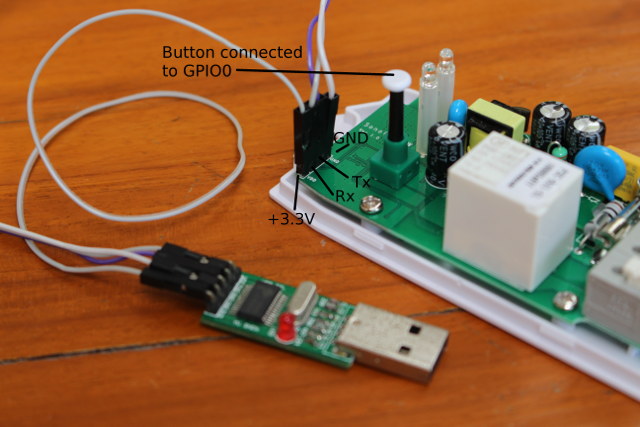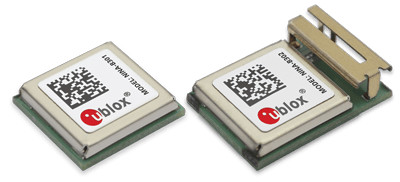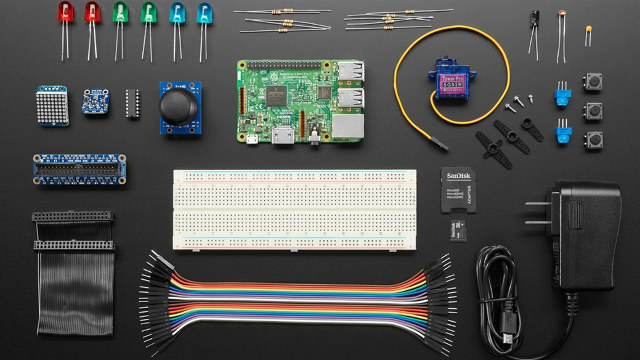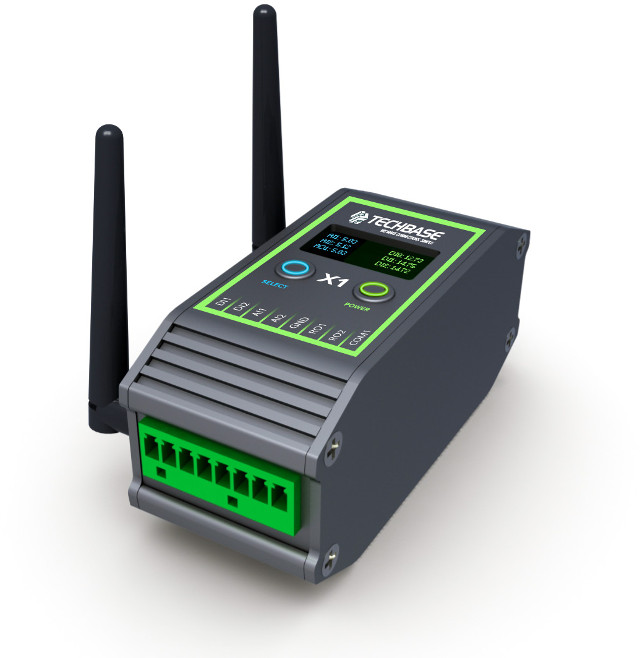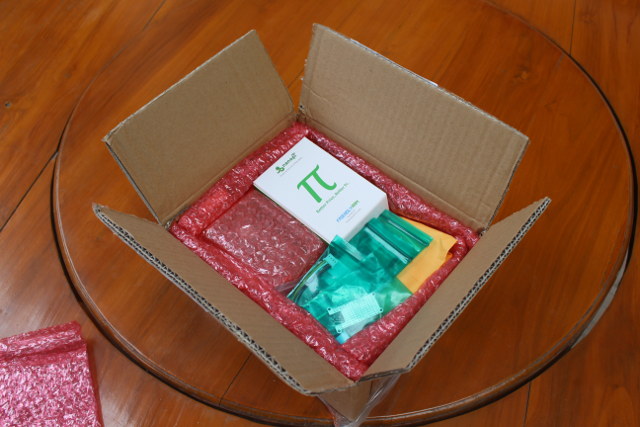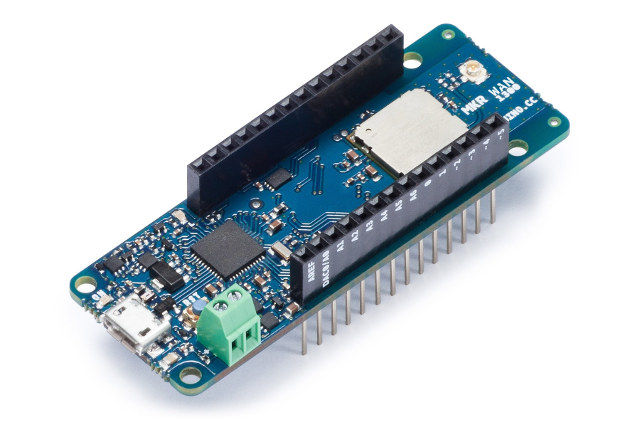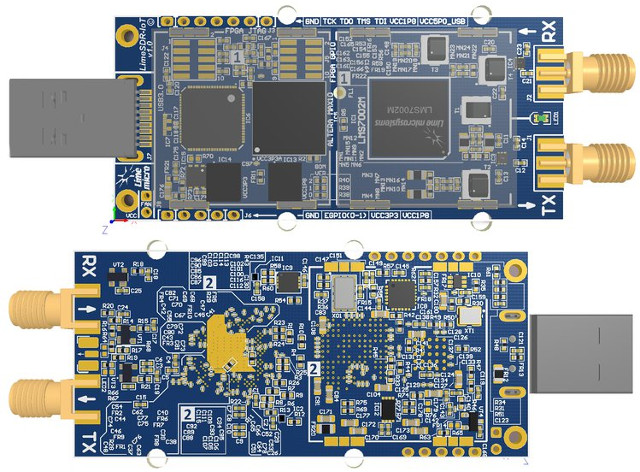This post was initially supposed to be part 2 of Sonoff B1 light bulb review, where I would have explained how easy it was to use OTA mechanism to update to Sonoff-Tasmota open source firmware, and shortly show about its features and capabilities. However, it took me over 10 hours to make that work, mostly due to misunderstand in the documentation, and time spent to configure routers. I also failed the first time with Sonoff B1, so I used the serial console method, and instead managed to use SonOTA method with Sonoff POW switching from stock firmware to Sonoff-Tasmota without having to solder or tear down anything. Updating software with a USB to Serial Board Using a USB to serial board is the most common method to switch from stock firmware to open source firmware such as ESPurna or Sonoff-Tasmota in Sonoff devices or other ESP8266 based devices. It’s quite […]
U-Blox announces NINA-B3 Bluetooth 5 Wireless MCU Modules
Bluetooth 5 promises to quadrupling the range and double the bandwidth of Bluetooth LE connection. However, we’ve seen not all Bluetooth 5 solutions will provide all features in a comparison between Nordic Semi nRF52840 vs nRF52832 vs nRF52810 Bluetooth 5 ready SoCs, as while all three platforms will handle the higher bandwidth just fine, only the nRF52840 will extend the range up to 4 times. That’s why you want want to make sure you get recent hardware capable of fully handling Bluetooth 5, and U-blox has just announced NINA-B3 Bluetooth 5 module series, based on nRF52840 SoC, that will both provide longer range and higher bandwidth. U-blox NINA-B3 module comes in two family flavors: NINA‑B31, comes pre‑flashed with u‑blox’s Connectivity Software, eliminating the need for embedded programming. Support for AT command set, and u-Blox low energy serial port service NINA‑B30 using nRF52840’s ARM Cortex-M4F as an “Open CPU” that allows […]
Google Cloud IoT Core Enters Public Beta, Various Devkits Available
Back in May, I wrote about Allwinner R18 based Banana Pi BPI-M64 Board with Google Cloud IoT Core support, as Google unveils the new cloud service during Google I/O. However, at the time it was only available to selected partners, and Google has recently launched the public beta making their IoT device management platform available to all. I first learned about this through an ARM community blog post announcing availability of the ARM-based IoT Kit for Cloud IoT Core on Adafruit using Raspberry Pi 3 board, a breadboard, and various modules that can be managed through Google services. But that are plenty of other IoT kits or boards for Google Cloud IoT Core including: Allwinner R18 based Pine A64-LTS, Banana Pi BPI-R18 Marvell based MACCHIATObin, and ESPRESSOBin boards Mongoose OS IoT starter kit with ESP32 board( instead of Raspberry Pi 3) Grove IoT Commercial Developer Kit based on Intel NUC […]
TECHBASE Moduino X Series Industrial IoT Modules / Endpoints are Based on ESP32 WiSoC
We’ve previously covered TECHBASE ModBerry industrial IoT gateways leveraging Raspberry Pi 3, FriendlyELEC NanoPi M1 Plus, or AAEON’s UP Linux boards. The company has now launched Moduino X series modules powered by Espressif ESP32 WiFi + Bluetooth SoC to be used as end points together with their ModBerry gateways. Two models have been developed so far, namely Moduino X1 and X2, with the following specifications: Wireless Module – ESP32-WROVER with ESP32 dual-core Tensilica LX6 processor @ 240 MHz, 4MB pSRAM (512KB as option), 4MB SPI flash; External Storage – X2 only: micro SD card slot Connectivity 802.11 b/g/n WiFi up to 16 Mbps + Bluetooth 4.2 LE with u.FL antenna connector X2 only: 10/100M Ethernet Options: LoRa (Semtech SX1272); Sigfox (TI CC1125); LTE Cat M1/NB1; Zigbee Serial – 2x RS-232/485 Display – Optional 0.96″ OLED display with 128×64 resolution Expansion I/Os 4x Digital I/O (0 ~ 3V) 2x Analog Input: […]
NanoPi Duo Starter Kit Review – Part 1: Unboxing and Assembly
NanoPi Duo is an inexpensive Allwinner H2+ quad core board with 256MB or 512MB RAM that can fit into a breadboard, and FriendELEC also provides a starter kit with a carrier board, heatsink, enclosure, USB debug board and cable, as well as optional accessories such as an half-length SSD drive. The company sent me two kits for review, so I’ll first check out what I got, and show how to assemble the kit, before actually playing with the board and kit next month. NanoPi Duo Starter Kit Unboxing I got a bunch of boxes and bubble wraps in the package… … and indeed received two identical kits. Each kit comes with a NanoPi Duo board with soldered headers, a mini Shield for NanoPi Duo, a heatsink and thermal pad set, a micro USB to USB cable, a USB to TTL debug board and cable, and acrylic case, and user manuals […]
Arduino MKR WAN 1300 & MKR GSM 1400 Boards Launched with LoRaWAN and 3G Connectivity
Arduino has introduced two new boards right in time for Maker Faire New York: MKR WAN 1300 with a LoRa radio, and MKR GSM 1400 with a “3.75G” cellular module, both software compatible with Arduino Zero, and in Arduino MKRZero board form factor. MKR WAN 1300 Board Arduino MKR WAN 1300 specifications: MCU – Microchip Atmel SAMD21 32-bit ARM Cortex M0+ MCU @ 48 MHz with 32 KB SRAM, 256 KB flash (8KB for bootloader) Digital I/O Pins – 8x digital I/Os, 12x PWM, UART, SPI, and I2C, 8x external interrupts Analog Pins – 7x analog inputs (8/10/12-bit ADC), and 1x analog output (10-bit DAC) DC Current per I/O Pin – 7 mA LPWAN connectivity Murata CMWZ1ZZABZ LoRa module based on Semtech SX1276 and STMicro STM32L Antenna power – 2dB Carrier frequency – 433/868/915 MHz Working regions – EU/US USB – 1x micro USB port for power and programming […]
Mictrack MT600 4G GPS Tracker Supports Traccar, OpenGTS, and Other GPS Tracking Platforms
Cellular GPS trackers have been around for a few years, but so far mostly 2G or 3G GPS trackers with products like Ping, Particle Asset tracker, and many other models selling on Aliexpress. 4G GPS tracker have been less common. However, recently we’ve seen platforms like Wio LTE and AutoPi that could handle GPS tracking over LTE connectivity, and another alternative would be Mictrack MT600 that ready-to-use solution to track your car or other vehicle with GPS and 4G. Mictrack MT600 hardware specifications: GNSS U-BLOX7 GPS Chip GPS sensitivity -162dBm Channel – 56 Positioning Accuracy – 10m Cold start: 30s; warm start: 15s; hot start: 1s SMA antenna connector Cellular Connectivity Qualcomm 4G LTE chip MT600-A model (North America): 4G FDD LTE: 700/850/1700/1900MHz 3G UMTS: 850/1700/1900MHz GSM: 850/1900MHz MT600-C model (Asia): 4G FDD LTE: 900/1800/2100MHz 4G TDD LTE: 1900/2300/2500/2600MHz 3G UMTS: 900/2100MHz GSM: 900/1800MHz MT600-E (Australia/Asia/Europe) 4G FDD LTE: 800/850/900/1800/2100/2600MHz 3G […]
LimeSDR Mini is a $135 Open Source Hardware, Full Duplex USB SDR Board (Crowdfunding)
LimeSDR open source hardware software defined radio was launched last year with the promise of integration with Ubuntu Snap Store allowing to easily download and install various radio implementations such as LTE, WiFi, Bluetooth, LoRa, etc… It was offered for $200 and up as part of a crowdfunding campaign, but Lime Microsystems is back on CrowdSupply with a cheaper and low end version aptly called LimeSDR Mini.LimeSDR mini specifications: FPGA – Intel Altera Max 10 (10M16SAU169C8G) with 16K Logic gates, 549 KB M9K memory, 2,368 KB user flash memory Storage – 4 MB flash memory for data; 2x128KB EEPROM for RF transceiver MCU firmware and data RF Lime Microsystems LMS7002M RF transceiver Tx & Rx SMA connectors Frequency range – 10 MHz to 3.5 GHz RF bandwidth – 30.72 Mhz Sample Rate – 30.72 MSps with 12-bit sample depth Power Output (CW): up to 10 dBm USB – 1x USB […]


